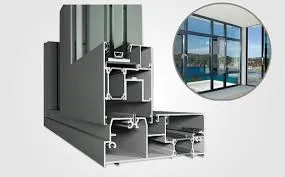cast iron castings
Understanding Cast Iron Castings Properties, Applications, and Advantages
Cast iron has been a popular material for manufacturing a diverse range of products for centuries. This versatile metal alloy is primarily composed of iron, carbon, and silicon, with the carbon content typically ranging between 2% to 4%. Cast iron is renowned for its excellent casting properties, making it an ideal choice for various applications, from machinery and automotive parts to cookware and decorative items. This article will explore the characteristics, advantages, and applications of cast iron castings.
Properties of Cast Iron
One of the standout properties of cast iron is its castability. The alloy has a relatively low melting point, which allows it to be poured into molds and take on complex shapes with ease. This makes it extremely efficient for large-scale manufacturing processes. The solidification of cast iron creates a dense microstructure that can withstand significant wear and fatigue, making it suitable for high-stress applications.
Another important characteristic of cast iron is its excellent hardness and wear resistance. The presence of carbon and crystalline structures contributes to the hardness of the material, which is advantageous in applications such as engine blocks and machinery components. Furthermore, cast iron has a good capacity for shock absorption, which allows it to dampen vibrations effectively. This property is particularly beneficial in situations where noise reduction is desired, such as in the manufacture of engine housings and heavy equipment.
Types of Cast Iron
There are several types of cast iron, each with unique properties that make them suited to specific applications. The most common types include
1. Gray Cast Iron The most widely used form, gray cast iron, is known for its excellent machinability and good wear resistance. It gets its name from the graphite flakes that give the material a gray appearance. This type of cast iron is commonly employed in machine tool beds, engine blocks, and pipes.
2. Ductile Cast Iron Also known as nodular iron, ductile cast iron contains small nodules of graphite, which give it higher ductility and tensile strength compared to gray cast iron. This makes it ideal for applications requiring greater impact resistance, such as gears, couplings, and automotive components.
cast iron castings

3. White Cast Iron Characterized by its hard and brittle nature, white cast iron is less commonly used but finds applications in wear-resistant surfaces and applications needing exceptional hardness.
4. Malleable Cast Iron This type is produced through a heat treatment process that converts the carbon in the cast iron to a more workable form. Malleable cast iron is used in making cable fittings, tractor parts, and plumbing hardware.
Applications of Cast Iron Castings
The versatility of cast iron castings has led to their widespread use in various industries. In construction, cast iron is used for pipes, manhole covers, and architectural features due to its durability and aesthetic appeal. In the automotive industry, parts such as engine blocks, crankshafts, and brake discs are commonly made from cast iron for their robustness and ability to withstand high temperatures.
Additionally, cast iron is cherished in the culinary world for its ability to retain and evenly distribute heat. Cast iron cookware, such as frying pans and Dutch ovens, have become staples in kitchens around the globe due to their longevity and exceptional cooking qualities.
Advantages of Cast Iron Castings
The advantages of cast iron castings lie not only in their physical properties but also in their economic benefits. The casting process allows for high production rates and the creation of complex shapes without the need for extensive machining. Furthermore, cast iron is relatively inexpensive compared to other metals, making it a cost-effective material choice for manufacturers.
In conclusion, cast iron castings are an essential component of numerous industries due to their unique properties, versatility, and economic advantages. Understanding these characteristics can help manufacturers and engineers make informed decisions regarding material selection for their applications. Whether in machinery, automotive parts, or culinary tools, cast iron continues to be a material of choice, proving its relevance in today's technological landscape.
-
Wrought Iron Components: Timeless Elegance and Structural StrengthNewsJul.28,2025
-
Window Hardware Essentials: Rollers, Handles, and Locking SolutionsNewsJul.28,2025
-
Small Agricultural Processing Machines: Corn Threshers, Cassava Chippers, Grain Peelers & Chaff CuttersNewsJul.28,2025
-
Sliding Rollers: Smooth, Silent, and Built to LastNewsJul.28,2025
-
Cast Iron Stoves: Timeless Heating with Modern EfficiencyNewsJul.28,2025
-
Cast Iron Pipe and Fitting: Durable, Fire-Resistant Solutions for Plumbing and DrainageNewsJul.28,2025
-
 Wrought Iron Components: Timeless Elegance and Structural StrengthJul-28-2025Wrought Iron Components: Timeless Elegance and Structural Strength
Wrought Iron Components: Timeless Elegance and Structural StrengthJul-28-2025Wrought Iron Components: Timeless Elegance and Structural Strength -
 Window Hardware Essentials: Rollers, Handles, and Locking SolutionsJul-28-2025Window Hardware Essentials: Rollers, Handles, and Locking Solutions
Window Hardware Essentials: Rollers, Handles, and Locking SolutionsJul-28-2025Window Hardware Essentials: Rollers, Handles, and Locking Solutions -
 Small Agricultural Processing Machines: Corn Threshers, Cassava Chippers, Grain Peelers & Chaff CuttersJul-28-2025Small Agricultural Processing Machines: Corn Threshers, Cassava Chippers, Grain Peelers & Chaff Cutters
Small Agricultural Processing Machines: Corn Threshers, Cassava Chippers, Grain Peelers & Chaff CuttersJul-28-2025Small Agricultural Processing Machines: Corn Threshers, Cassava Chippers, Grain Peelers & Chaff Cutters












